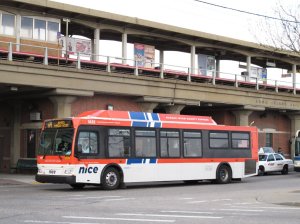A Smart Growth Wake-Up Call for NIMBY-Plagued Long Island
Last week, a report from the Long Island Index outlined how rail service can guide economic growth, and it also contained warnings about the slow pace of construction for transit-oriented development in the region. If transit stations are to become focal points for growth, the authors argued, Long Island’s governments need to start taking action.

While praising projects like East Side Access (which will connect LIRR trains to Grand Central) that are already underway, the report pointed to the need for two additional expansions — a second track from Farmingdale to Ronkonkoma and a third track on the LIRR Main Line between Floral Park and Hicksville — to keep the system from running up against capacity constraints that could lead to more driving.
Writing in the New York Times, Lawrence Downes picked up on the importance of moving beyond the NIMBYism that threatens to keep Long Island mired in cars-first suburbia. “It is an old suburb that ran out of places to sprawl,” he wrote. “It needs its vitality back.”
The Long Island Index report emphasized that, in order to jump-start its economy, Long Island must rebuild around its transit hubs. Initiatives are already planned for Ronkonkoma, Wyandanch, and a future station at Republic Airport, but there aren’t many shovels in the ground at this point.
This lethargy is also reflected in LIRR’s ridership numbers, which are growing more slowly than Metro-North and New Jersey Transit. On those systems, expansions such as Midtown Direct, Secaucus Junction, and a third track on the Harlem Line helped boost ridership and make the areas around stations more attractive for development.
The New York-Connecticut Sustainable Communities program is developing a blueprint for transit-oriented development in much of the region, and the report argues that local governance has to catch up. The parking lots and strip malls around Long Island’s train stations need more than viable transit service and continued planning. They also need local governments to move ahead with the zoning and infrastructure that enables walkable development.
Contrast the slow pace in the Long Island suburbs with what’s happening in Northern Virginia’s Tysons Corner, where planning and rezoning coupled with transit investment have primed a suburban hub for walkable growth. Long Island could undergo a similar evolution, if leaders don’t surrender the future to the NIMBY chorus.

